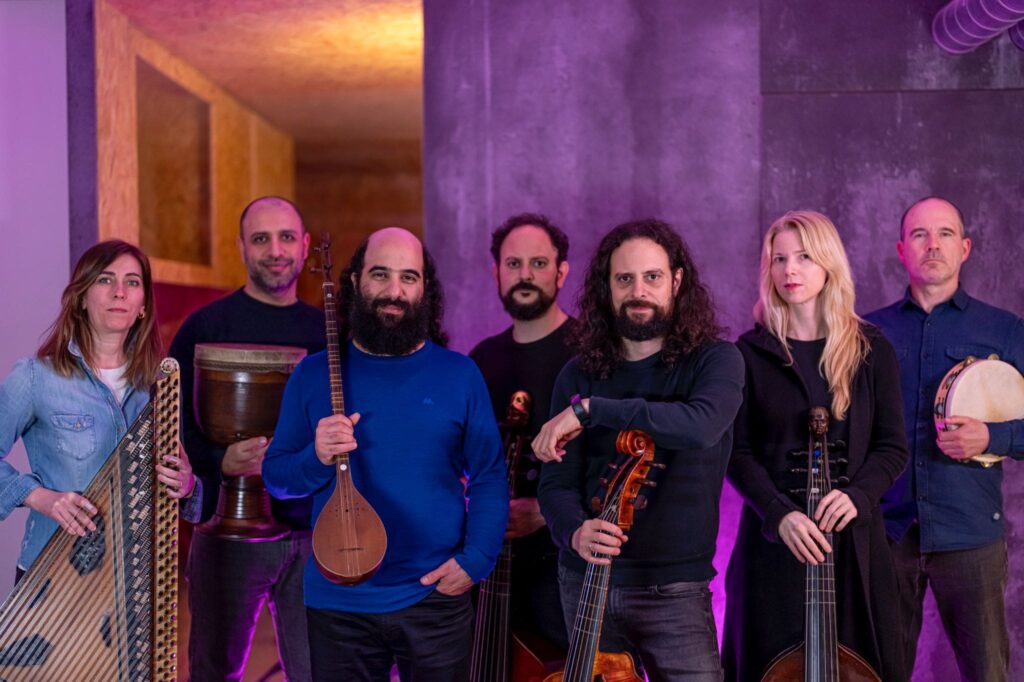Constantinople and friends make a club jam out of ancient music from Persia and Spain
Nothing gives us a more immediate and relevant idea of cultures from before the photography and audio recording eras than music. And no organization shows how uncannily modern the music of the past could be than Music Before 1800.
Sunday afternoon at Corpus Christi Church, MB1800 combined the forces of the viola da gamba trio Accademia del Piacere and of Persian setar (a four-stringed lute) master Kiya Tebassian and his ensemble Constantinople for a program of 16th and 17th century music from both Spain and Persia. The concert offered wonderful music making, captivating in the moment and moving in how it showed the fundamental social power of music and the complementarity and commonality of musical ideas across what are often assumed to be boundaries of both culture and time.
The geography of the Mediterranean meant that people and cultures have mixed among each other (through trade, travel, and conquest) for centuries, from the eastern end into and through the Levant. Long before institutions developed a protocol they call multiculturalism so they might extend a tentative reach outside their niches, cultures spent eons swapping and adopting ideas and synthesizing new ones. The music on Sunday told that story through twelve different, short works, several by that prolific composer Anonymous.
One of the most important common elements is the drone, the foundation for several of the pieces Sunday and of the Medieval traditions out of which modes and the polyphony of Spanish composers like Francisco Guerrero and Alonso de Mudarra grew.
On top of a drone, the opening anonymous Persian pieces added supple rhythms that expressed the feeling of human movement, whether deliberate walking pace or dance. With two percussionists in the combined ensemble, the rhythms were not just prominent, but at one point Hamin Honari had an extended solo on the tombak, a goblet shaped drum played by hand, that was as well-shaped, exciting, and satisfying as anything from a great rock band.
That was the feeling of this performance. What classical music has come to be called were pieces were really, Sunday, songs one would hear a band play today. Romanesca, o Guárdame las vacas from de Mudarra was a song without words, the pishrows (a Persian form) of Aga Mu’men and Dimitrie Cantemir were instrumentals that seemed perfect for both the dance hall and the drinking hole. All were played with stretches for individual improvisations within the form, with gambaist Fahmi Alqhai, kanun (a type of zither) player Didem Basar, and Tabassian—using a full range of accents and beautifully placed bent notes—playing briefs solos that were locked into the scales, textures, and rhythms of the music.
Though no one seems to play fandangos anymore, the one from Santiago de Murcia that featured the tombak solo, came off as that most common and contemporary thing in music, just a band playing together, jamming and using an established form to make something new. None of this was ceremonial or liturgical music, the purpose of it all was social, the pleasure of musicians getting together to play and listeners to soak it in—one easily imagined groups of people with no common language but music. At the start and close, Tabassian sang poetry by the 14th century Persian lyric poet Hâfez on top of the instrumental music, an enthralling mix of contemporary vocal inflections and microtonality like in maqqam melodies.
One of the most satisfying qualities of the concert was that one never heard any implicit bar lines, nothing that gave any sense the music began as regulated by notation on the page. Instead one felt, and heard, beats, the music organized in patterns of eight or even, in Tabassian’s own concluding Chavosh, fifteen. That rhythmic pattern was thrilling in both how complex it was and how smooth was the groove, which was compelling in itself. One could feel that people in 16th-century Persia enjoyed music the same way in the body that one could Sunday.
The melodic patterns heard, the pentatonic and minor scale material, were as tried and true 500 years ago as they are today. Basar’s kanun mixed quarter-tone tuning with more standard intervals that fit in with the ensemble, and her ability to move between and mix the two in the middle of pieces, as in the anonymous Glosa sobre el canto ilano Pange Lingua was scintillating, something ancient within music that was close to being improvised on the spot. It may have been a church, and the music may have been old, but Sunday it all felt like a club show.
Music Before 1800 presents La Morra, 4 p.m. May 5. mb1800.org
